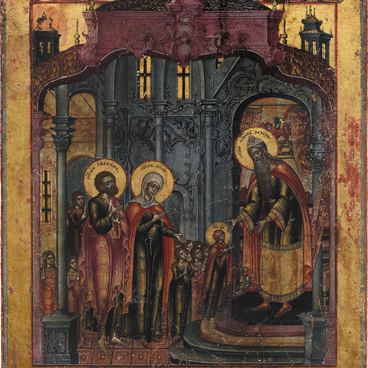In the Byzantine-Slavic world, there were four holy martyrs known as Paraskeva. In Russia, the martyrs from Byzantine Iconium and Rome were venerated to a greater extent. Their lives and great deeds were mixed up and finally combined into a single image, which became popular in the Russian art.
One of the main aspects of the veneration of Paraskeva is associated with her name: in Greek it means Friday (same as Pyatnitsa in Russian). Legend has it that she was born on this day of the week. Her parents, who were for a long time unable to conceive a child, decided to name their daughter accordingly. In peoples’ minds, her martyrdom in the name of Christianity was often combined with the idea of Good Friday and the sacrifice of Christ.
One of the main aspects of the veneration of Paraskeva is associated with her name: in Greek it means Friday (same as Pyatnitsa in Russian). Legend has it that she was born on this day of the week. Her parents, who were for a long time unable to conceive a child, decided to name their daughter accordingly. In peoples’ minds, her martyrdom in the name of Christianity was often combined with the idea of Good Friday and the sacrifice of Christ.




